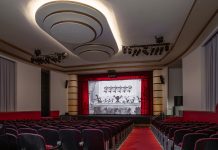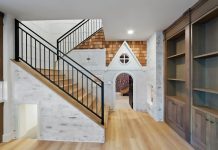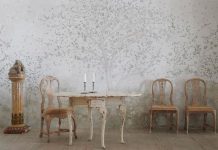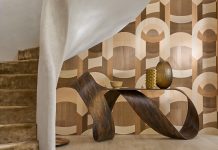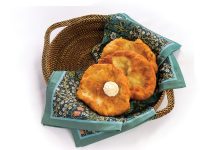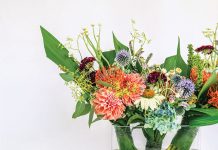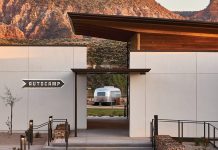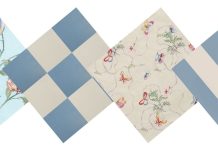The cinematic Western landscapes and cowboy protagonists of Billy Schenck’s art aren’t just a fantasy—it’s in his DNA. The artist, who spent part of his childhood riding horses and farming cattle in Wyoming, is known as, in his words, one of the “granddaddies” of Western pop art. Though he spent part of his early career in New York City, Schenck, who now lives in New Mexico, fully embraces the Western lifestyle he depicts. In the mid ‘70s, he took the cowboy way of life one step further when a ranch manager taught him to ride bareback and saddle bronc. The only problem? “I was terrible,” he says. “I was getting just nearly killed, falling off one horse after another after another. It was really frustrating because rodeo was in my blood.”
Later in life, Schenck got back on the horse—literally. With the encouragement of a local rancher, he began team penning and ranch sorting. This time, he found much more success: he even won a ranch sorting world championship in 2009. He still ranch sorts in local shows, and is proud to say he had 10 perfect runs in one day. (In ranch sorting, a rider attempts to move ten cattle from one pen to another, in numerical order. A perfect run requires herding the cattle in sequence in 60 seconds.) Schenck, now in his 70s, says, “I take great pride in the fact that I can be that old and still be competitive and just knock the socks off of people on occasions.”
Schenck’s genuine love for the American West—its culture, its iconography, its landscapes—is on full display in his two simultaneous Utah exhibitions: Schenck’s Utah: A Land Less Traveled at Modern West and Billy Schenck: Myth of the West at the Southern Utah Museum of Art.

Schenck’s Utah is the first show of his career to focus entirely on landscape art. In the first decades of his career, landscapes were solely in the background of his figurative and caption paintings. The dramatic red rock mesas of southern Utah, though, have always been integral to Schenck’s work—he says he’s been “inspired by the Utah landscape since almost day one, which would be 52 years ago.” In the early 2000s, he began working on landscapes without figures. Why? “Just to see if I could do it,” he says. Shalee Cooper, Gallery Director of Modern West, was drawn to Schenck’s distinctive interpretations of Utah geography and encouraged Schenck to display his landscape works for this exhibition.
The paintings and serigraphs in Schenck’s Utah feature dramatic shadows and lonely, beautiful expanses of quiet desert. The scenes are quintessentially Utah, but up close, the sharp divisions between colors and shapes feel more surreal—in “Caution Hot Cows,” for example, spindly black tree branches contrast with white clouds, jagged like puzzle pieces. Some works, like “Late Day Monsoons,” feature moody shades of brown and gray; others bring an unexpected vibrancy to stretches of barren land.
To create his paintings, Schenck starts with a road trip—to Monument Valley, Arches National Park or other locations in the southern Utah desert that catch his eye. He photographs rock formations and landscapes and then returns to the studio, where he uses a slide projector to review images for inspiration. “I go through the carousels until I find a group—maybe three, five, 10 slides—and just see how they’ll match up,” he says. He starts with the foreground—usually a dramatic rock formation or sand dune—moves to the middle ground, then the background and finishes with his dramatic skyscapes, developing the color palette as he goes. This process—partly a composite of real locations, partly an exploration of his own imagination—explains the familiar yet otherworldly quality of his work.

At Southern Utah Museum of Art, Billy Schenck: Myth of the West is a career-spanning retrospective that includes works from various points of Schenck’s more than four decades-long career. The exhibition, which includes 25 paintings and three serigraphs, illustrates some of Schenck’s trademarks: a striking, colorful reductivist style, offbeat humor and surprising interpretations of classic Western iconography.
Myth of the West ties Schenck to his varied influences. His idiosyncratic style comes from several directions—the marriage of text and image of Roy Lichtenstein’s caption paintings, the methodology of the photorealists in the 1960s and 70s and even the subject matter of classic Spaghetti Westerns. (After first seeing Sergio Leone’s Once Upon a Time in the West, Schenck thought to himself, “I need to try to do in paintings what this guy has done in film.”) At SUMA, Schenck’s work is paired with one of his key influences—Andy Warhol. Warhol’s Cowboys & Indians includes 10 prints and four trial proofs from Warhol’s last project in the 1980s. For Schenck, this exhibition is a full circle moment—he even worked with Warhol and The Velvet Underground for a brief period in 1966, when Schenck learned from pop art pioneers in New York City. Michael Duchemin, director of the Briscoe Museum in San Antonio, first paired Schenck with Warhol, linking Western artists with the larger pop art tradition. (“I thought it was great for my career. It isn’t gonna affect Andy too much one way or the other,” Schenck quips.)
For Schenck, Myth of the West has been a chance to track the evolution of his work over the decades. This recollection, though, hasn’t slowed him down—in fact, it’s only led to more inspiration. “I’ve got ideas coming out of my ears,” he says. “I can’t even begin to catch up with them at this point.”
For more information on these exhibitions, visit Modern West and SUMA’s websites.
Read more on Utah art exhibits here.



